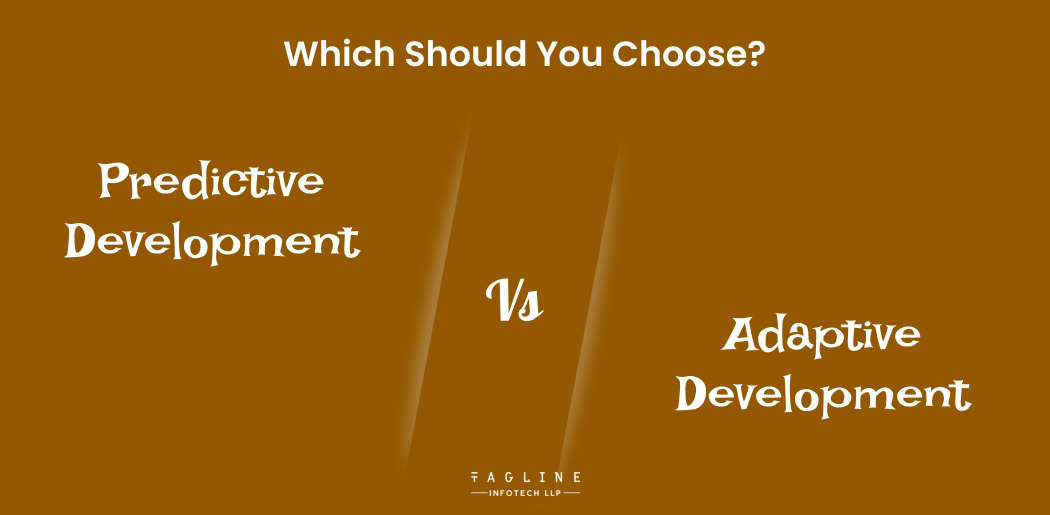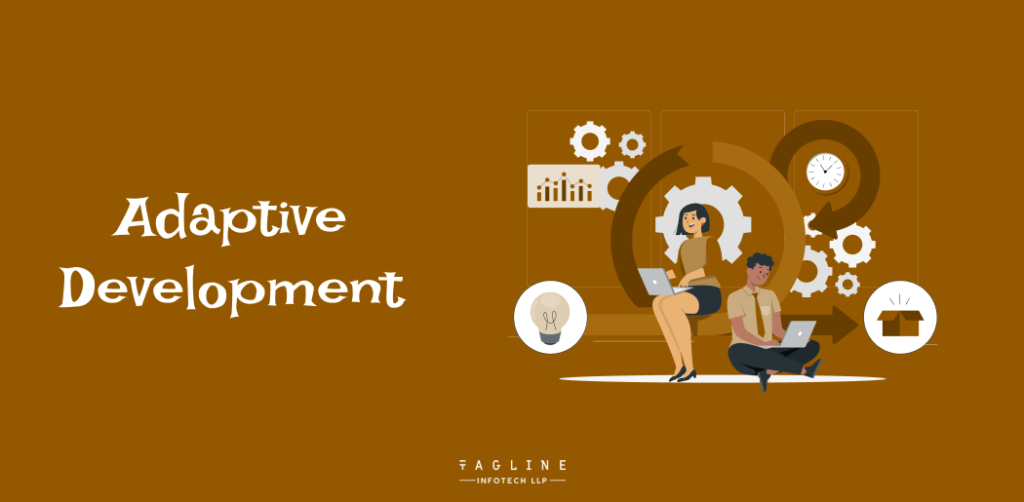A Guide on Data Visualization in ReactJS and...
May 15, 2024
Home >> Software >> Predictive vs Adaptive Development: Which Should You Choose?

Quick Summary
Choosing a suitable software model is just as crucial as selecting the right vendor when it comes to software development. Why is the existence of such a model required? One wise person once said, “Failure to plan, plan for failure.
The Systems Development Life Cycle (SDLC) model is a crucial step in project preparation. The conceptual framework known as the Software Lifecycle Development Cycle (SLDC) covers all of the steps involved in software development. Here you can see detailed comparison between Predictive vs Adaptive development.
Stated differently, the Software Lifecycle Development Cycle (SLDC) is the indispensable project management solution that will lead your developers through the entire project. A model that can manage all of the business requirements guarantee that each feature is designed and implemented accurately, and make sure the project runs smoothly is what you need.

Incremental or Predictive development is a widely used methodology for software development where the model is tested, designed or implemented incrementally until the product is created or until the desired requirements are fulfilled.
Also, the model is known for combining all the crucial elements of the waterfall model, and in this model, each one surpasses the testing, implementation and design phases.
The model is also inclusive of delivering system elements. As they are completed, they will allow the partial making of products, which means that all the features are allowed to be used before the completion of the project, avoiding the development time.
This model will help in easing out of the traumatic effect of introducing a new system at a time.

Adaptive development is like Kanban or Scrum and is designed explicitly for iterating rapidly for experimental projects. They depend on the ongoing contributions of all stakeholders and are amenable to changes in the project’s scope as well as in the needs of the system.
This approach is also known as “freeform software design” because it offers a very flexible design paradigm that encourages adaptive planning and evolutionary development when the ultimate goal is unclear.
Companies use agile project management for most projects, frequently managed by cross-functional teams. This technique uses short iterations called “sprints” supplemented with several product demonstrations; thus, even with rapid progress, the possibility of wasted resources will be reduced.
During these meetings, developers can be flexible and make quick changes at any product development stage. Daily scrum sessions aim to track progress and proactively address changing conditions.
Additionally, this approach involves managers and product owners closely in the development process, leading to their eventual integration into a team that facilitates true collaboration between our engineers and clients.
“Benefits of Custom Software Development “
– Also Read Article
| Sr No. | Predictive Development | Adaptive Developments |
|---|---|---|
| 1 | Based on waterfall methodology | Based on Agile development |
| 2 | It adheres to the conventional software development process | It adheres to the iterative software development process |
| 3 | This approach can be implemented by individuals or teams alike | This procedure is implemented via partnership |
| 4 | The errors are never rectified easily throughout the procedure | The errors can rectified throughout the procedure |
| 5 | The testing is completed by the project’s end | The testing can be performed at any stage of the project. |
| 6 | Predictive development is procedure oriented | Adaptive Development is people oriented |
| 7 | This approach is appropriate when a thorough understanding of the product is in place. | This model is well-suited for environments that are constantly evolving and changing |
Dive into Predictive vs. Adaptive Development and make the right choice for your project!
Contact with us to Stand out from the crowd with unique and innovative software development to your industry.
The difference between predictive and adaptive models will depend upon many factors. The adaptive approach will trigger more flexibility and make a lot of room for changes in the development procedure.
The predictive system is suitable for the project to have a vision and specification set that are not required to change.
If you need to see a difference in action, consider the above chart showing the two procedures side-by-side. The agile development process spirals through shorter cycles that begin with a complete but bare-bones product and layer on features, functionality, and complexity throughout the process.
In contrast, the predictive development process is linear, planning, creating, reviewing, and releasing each component in one fell swoop.
Put another way, the predictive development process is essentially linear, involving each component’s planning, creation, review, and release all at once.
Reading the article will give you a clear understanding of adaptive and predictive methodologies. Here, you can now make better decisions about the kind of approach that is best for you.
However, everyone has unique advantages and can be considered appropriate in different contexts. You should hire software developers if you are trying to get highly scalable solution.
You can also carefully assess the specifications and requirements of the project on adopting an SDLC. There can be adverse circumstances in adopting new software development procedures if you are using a particular methodology and are best at it.
Software development can be chaotic and tedious unless you have a professional working on them. It would help if you looked for a company with extensive experience working in SDLC per your project requirements.
Agile is a well-known methodology applied to projects whose clients' needs and demands fluctuate often. Unlike predictive development, it does not consider requirements constant and well-defined or account for the possibility of changes. These traits are connected to the adaptive development process. Agile, then, is defined by a propensity for adaptation as opposed to prediction.

Digital Valley, 423, Apple Square, beside Lajamni Chowk, Mota Varachha, Surat, Gujarat 394101
+91 9913 808 2851133 Sampley Ln Leander, Texas, 78641
52 Godalming Avenue, wallington, London - SM6 8NW